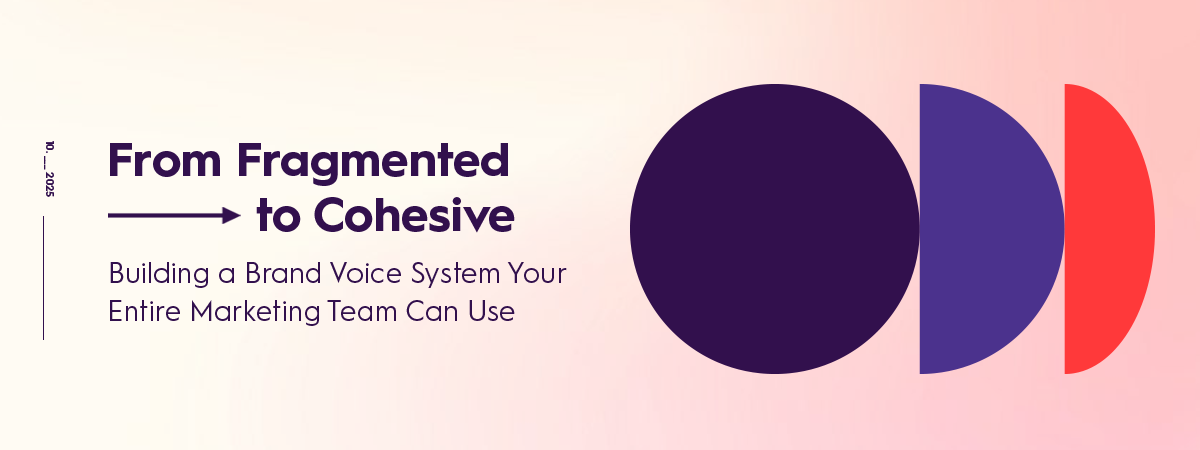Most “brand voice” projects stop at a mood board and a handful of adjectives:
Confident. Conversational. Trusted.
Then teams are left to interpret it on the fly.
The result? Five people writing in five different styles — and a brand that sounds different every time it speaks.
In 2026, that’s a liability. Every inconsistency is a missed opportunity to build trust, recall, and competitive edge.
Because in a world where content moves at velocity and AI tools are multiplying voices, cohesion is the only way to stay recognisable.
The real job of brand voice
Your brand voice isn’t just about sounding polished. It’s a commercial tool.
Done right, it:
- Speeds up production — fewer rewrites, faster approvals, less back-and-forth
- Keeps campaigns coherent — every channel, every team member, every agency partner feels like they’re pulling in the same direction
- Builds instant recognition — customers should know it’s you before the logo loads
- Turns strategy into experience — voice makes your positioning tangible, something people can actually feel
When your voice is fragmented, the opposite happens: delays, diluted impact, and creeping doubt.

The difference between personality and tone
Here’s where most businesses trip: they treat brand voice as a single thing.
But there’s a critical distinction:
- Brand personality = who you are (your DNA, consistent and unchanging)
- Tone of voice = how you adapt that personality across contexts (flexible, situational)
Without that separation, brands end up with either:
- A rigid voice that feels robotic and tone-deaf in different scenarios, or
- A shapeless voice that bends so much it loses all distinctiveness
Great brands know how to hold both truths: unshakable character, adaptable expression.
What the Best Brand Voice Systems Have in Common
Think of your brand voice system as infrastructure. The best systems are:
- Codified — practical guidance, with examples and “do this / not this” clarity
- Connected — tied directly to strategy, not arbitrary adjectives
- Contextual — showing how the voice flexes in different situations (a product launch ≠ a customer apology)
- Compact — easy to use, not buried in a 60-page PDF no one opens
The goal is consistency: everyone who writes on your brand’s behalf should land within the same orbit.

How to Create a Brand Voice System That Works
At Viabrand®, we approach voice as a repeatable asset — something any marketer, copywriter, or salesperson can apply with confidence. That means:
- Anchoring voice in positioning: personality traits emerge from strategy and audience reality, not just aspiration
- Translating traits into behaviours: “clear” becomes “short sentences, no jargon,” not just a buzzword
- Mapping tonal shifts: practical matrices that show how voice flexes between contexts (e.g. bold vs reassuring)
- Creating usable tools: one-pagers, content prompts, before/after rewrites — designed for people under deadline pressure
This isn’t about telling teams what not to do. It’s about making it effortless to stay on-brand.
Three Questions to Ask Right Now
- Could your audience recognise you without seeing your logo?
- Would a freelancer or new hire know how to write in your voice after an hour?
- Does your voice work across all the channels you actually use — from a sales deck to TikTok?
If not, your system isn’t working hard enough.

Cohesion Builds Momentum
The strongest brands sound and look consistent. And in a content-saturated world, that consistency is how you:
- Build recall faster
- Shorten the path to trust
- Create an emotional fingerprint your competitors can’t copy
Cohesion compounds. Every message builds on the last, creating a memory structure that sticks.
If you’re ready to move from fragmented to cohesive, we can help you build a voice system designed for speed, scale, and distinction.
